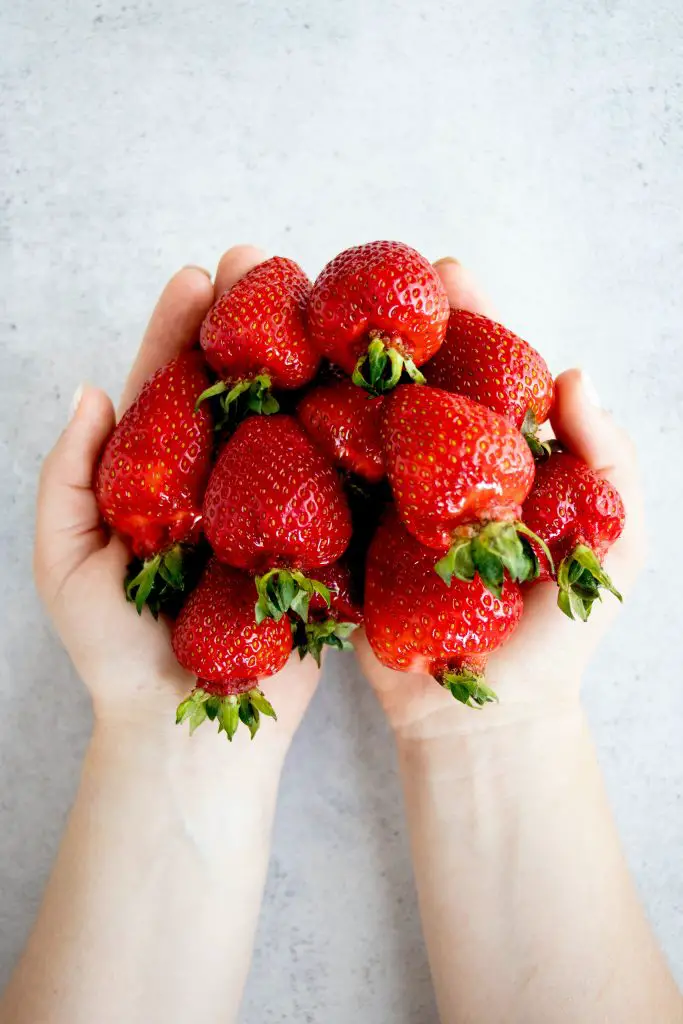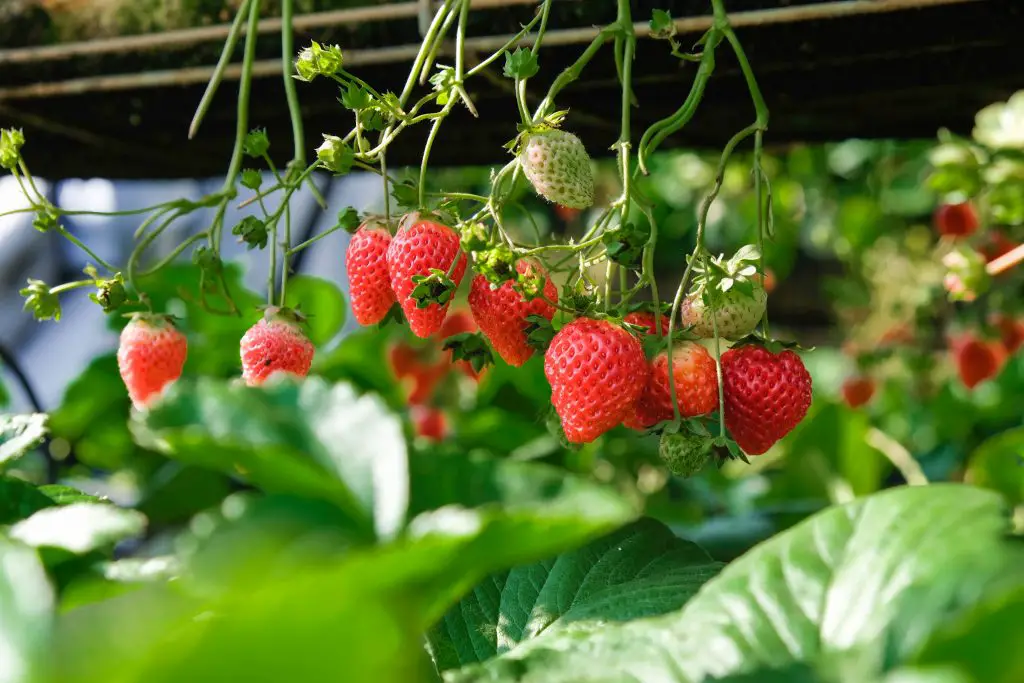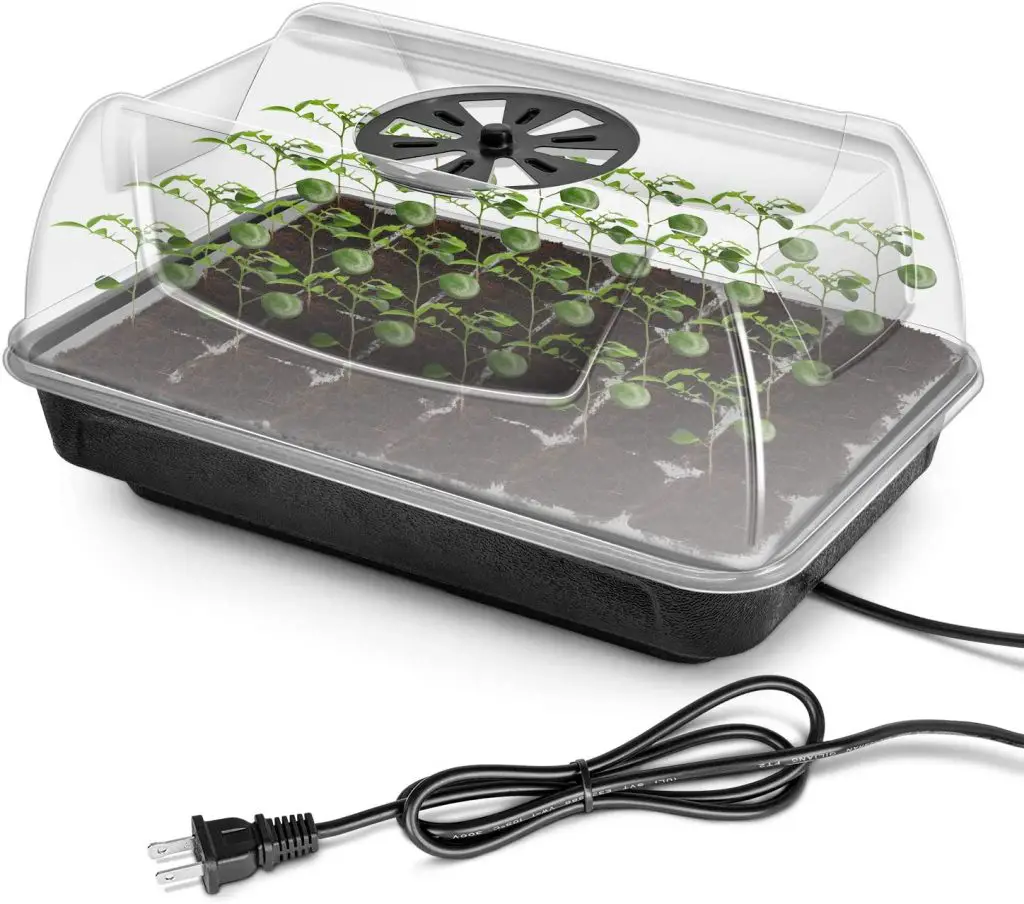Can Strawberries Grow Up A Trellis? Strawberries are one of the most popular fruit in the supermarket however the flavors that you get from the commercial fruit do not come close to the sweetness of homegrown strawberries. However, one of these problems that many gardeners face is that the strawberries can rot on the ground so is it possible to grow them up a trellis?
Strawberries are not really plants that tend to produce a trailing vine like other climbing plants. However, they do produce runners every year that are connected to the plant and can spread up to 30 or 40 inches if given the opportunity. These runners can be tied up a trellis but there generally isn’t a lot of benefits in doing this as the length of the runners is quite limited.
Additionally, the benefits again from using trellis systems which are reducing the space used and reducing the chances of the fruit rotting can be achieved in other ways that are far more effective. If space is an issue plants can be grown in pots on a vertical wall which provides the advantage of allowing the strawberries to trail over the edge of the pots preventing any chances of rotting.
The other advantage of this type of setup is it can be designed to be extremely water efficient by ensuring that pots at the top layer are aligned with lower layers which allows water to pass through multiple pots. This can be achieved by using either growing the plants in individual pots or also using angled guttering materials which are designed to pass the water from one layer to the next.
However, if space is not the major concern but rather the rotting of fruit this can easily be overcome by placing dry straw underneath the strawberries to ensure that they do not sit on the ground in a wet location. Doing this also helps to reduce the chances of the strawberries being eaten by soil-borne insects and bugs.

What Is The Best Container For Growing Strawberries?
The other option is to grow strawberries in pots as this allows any paved areas to become productive in the garden. However, it is recommended that you do not use ordinary terracotta or plastic pots as they do not maximize the output in the available space.
The most common types of pots that are used are designed specifically for growing strawberries as they are usually made of terracotta and with pockets coming out the sides of the containers. This allows multiple strawberries to be planted into the same pot while maximizing fruiting space.
However, these days there are several different versions on the market that are available that will help to optimize your strawberry output. There are traditional strawberry pots that typically can accommodate around 6 to 8 strawberry plants and a typically 1 to 1 1/2 ft tall.
These types of pots are quite attractive and picturesque but they do not have the capacity of some of the more modern versions which tend to be made from plastic or even material. An example of a traditional strawberry pot is shown in the picture below and is available on Amazon, click on the link to see the latest price.
The more modern versions of the strawberry parts are essentially strawberry towers but typically can have up to 5 different layers which means that it can accommodate up to 20 plants in a similar space. An example of this type of pot is shown in the picture below and is generally lower cost than the traditional strawberry pots because these types of pots are made of plastic rather than clay. To see the latest price on Amazon click on the link below.
The third option that is commonly used is hanging pots which are usually made out of sturdy material and commonly accommodate 12 plants. These items are the lowest cost containers but due to the nature of the materials, they are made from. You can only expect them to last a couple of years. An example of this type of product is shown in the image below to see the latest price on Amazon click on the link.

Increase Your Strawberry Crop Using Grow Bags
Maximizing The Output Of Strawberry Plants
Strawberry plants are at their most prolific in the first 2 and 3 however after this period the productivity of the plants declines dramatically, additionally the production of runners also reduces. This means that it is common to see gardeners having to replace their entire plants after 4 to 5 years when they realise that they are no longer producing much fruit.
To avoid this situation the best way to manage is to ensure that you have strawberries placed in three different locations with each location containing plants that are one, two, or three years old.
Once the three-year-old plants have fruited they should be thrown out which for many people will be difficult to do given that they have usually just got a good crop that year. However, if you do not constantly replenish your plants you will end up in the situation where you have no fruit.
To ensure that you have plenty of plants to replace the existing ones it is important to ensure that you use the runners every year to produce enough plants to replace the three year old ones when they need to be disposed off.

As runners do impact the volume of fruit and the development of the crown it is generally recommended that you only have 2 to 3 runners per plant as a maximum. This will ensure that you still get a reasonable yield. However, the exception to this rule would be the three-year-old plants where you can have more runners on them as they are going to be disposed of anyway. Therefore should be milked for all that worth before they are thrown out.
To ensure that you maximize the number of runners that are produced it is important to keep a close eye on them in the spring when they start to produce them. Once they appear it is important to peg them down at the node to ensure that it makes good contact with the soil. If this is the case it will ensure that the plant roots quickly and can be eventually removed from the mother plant when established.
The best time to do this is at the end of the growing season when the last of the fruit has been removed and the plant is beginning to go into dormancy. This is usually the point at which the new plant has a sufficiently strong root system to be able to be separated from the mother plant.
I hope you found this article useful and have great success with your strawberry plants. If you have any comments or questions please leave them in the section below.
Relevant Articles
Can Strawberries Grow In Shade?
Can You Plant Seeds From Store Bought Strawberries?
How Many Runners Will A Strawberry Plant Have?
How Many Strawberries Can You Get From One Plant?
How To Make Strawberry Plants Produce More Fruit? (5 Academically Proven Strategies)


